2-Methylcyclohexanone
Synonym(s):Tetrahydro-o-cresol
- CAS NO.:583-60-8
- Empirical Formula: C7H12O
- Molecular Weight: 112.17
- MDL number: MFCD00001635
- EINECS: 209-513-6
- SAFETY DATA SHEET (SDS)
- Update Date: 2024-12-18 14:15:30

What is 2-Methylcyclohexanone?
Description
o-Methylcyclohexanone is a colorless liquid with a weak peppermint-like odor (also reported to be ace-tone-like). Molecular weight= 112.19; Specific gravity(H2O:1) = 0.93; Boiling point= 162.7℃; Freezing/Meltingpoint= - 13.9℃;Flashpoint = 47.8℃.HazardIdentification (based on NFPA-704 M Rating System):Health 2, Flammability 2, Reactivity 0. Insoluble in water.
Chemical properties
CLEAR COLOURLESS TO VERY SLIGHTLY YELLOW LIQUID
Chemical properties
o-Methylcyclohexanone is a colorless liquid with a weak peppermint-like odor (also reported to be acetone-like).
Chemical properties
2-Methylcyclohexanone has a weak, peppermint odor and burning sensation
Physical properties
Colorless liquid with a weak, peppermint-like odor.
Occurrence
Reported found in cockroaches as attractant pheromone; not reported found in natural foods
The Uses of 2-Methylcyclohexanone
2-Methylcyclohexanone can be used as solvent, lacquers.
The Uses of 2-Methylcyclohexanone
o-Methyl cyclohexanone is used as a solventfor varnishes, lacquers, and plastics; and asa rust remover.
The Uses of 2-Methylcyclohexanone
Solvent; rust remover
Preparation
From cyclohexanone by treatment with a base and then with methyl iodide
Production Methods
2-Methylcyclohexanone is manufactured by the catalytic hydrogenation of o-cresol or by the dehydrogenation of o-methylcyclohexanol. Methylcyclohexanones are used in small amounts as general purpose solvents for cellulose-based finishes and coatings.
Synthesis Reference(s)
Journal of the American Chemical Society, 108, p. 304, 1986 DOI: 10.1021/ja00262a025
Synthetic Communications, 8, p. 9, 1978 DOI: 10.1080/00397917808062176
Synthesis, p. 611, 1976 DOI: 10.1055/s-1976-24139
General Description
A water-white to pale yellow liquid with an acetone-like odor. Less dense than water. Vapors heavier than air. Flash point near 135°F. May be toxic by ingestion. Used as a solvent.
Air & Water Reactions
Flammable. Slightly soluble in water.
Reactivity Profile
Contact with strong oxidizers may cause fires and explosions [USCG, 1999].
Hazard
Moderate fire risk. Toxic by ingestion,inhalation, and skin absorption. Eye and upper res-piratory tract irritant, and central nervous systemimpairment.
Health Hazard
May cause irritation of the eyes, nose and throat. Prolonged or repeated contact may cause dermatitis.
Health Hazard
o-Methyl cyclohexanone is a mildly toxiccompound. Any health hazard from inhalingits vapors is low. Its vapors at highconcentrations in air can be irritating to theeyes, nose, and throat. Ingestion of the liquidcan cause sleepiness. Toxicity studies on animalssuggest that methyl cyclohexanone maycause an adverse effect on the lungs, kidney,and liver. An intravenous administration of270 mg/kg was lethal to mice.
LD50 value, intraperitoneal (mice): 200mg/kg.
Fire Hazard
Special Hazards of Combustion Products: Irritating vapors and toxic gases, such as carbon monoxide, may be formed when involved in fire.
Flammability and Explosibility
Flammable
Safety Profile
Poison by intraperitoneal route. Moderately toxic by ingestion and skin contact. When heated to decomposition it emits acrid smoke and irritating fumes.
Potential Exposure
Methylcyclohexanone is used as a solvent in making varnish, plastics, and as a rust remover. Also used in the leather industry.
First aid
this chemical gets into the eyes, remove anycontact lenses at once and irrigate immediately for at least15 min, occasionally lifting upper and lower lids. Seek medical attention immediately. If this chemical contacts theskin, remove contaminated clothing and wash immediatelywith soap and water. Seek medical attention immediately. Ifthis chemical has been inhaled, remove from exposure,begin rescue breathing (using universal precautions, including resuscitation mask) if breathing has stopped and CPR ifheart action has stopped. Transfer promptly to a medicalfacility. When this chemical has been swallowed, get medical attention. Give large quantities of water and inducevomiting. Do not make an unconscious person vomit.
storage
Color Code—Red: Flammability Hazard: Store ina flammable liquid storage area or approved cabinet awayfrom ignition sources and corrosive and reactive materials.Prior to working with this chemical you should be trainedon its proper handling and storage. o-methylcyclohexanonemust be stored to avoid contact with strong oxidizers (suchas chlorine, bromine, and fluorine) because violent reactionsoccur. Sources of ignition, such as smoking and openflames, are prohibited where o-Methylcyclohexanone isused, handled, or stored in a manner that could create apotential fire or explosion hazard. Metal containers involving the transfer of 5 gallons or more of this chemical shouldbe grounded and bonded. Drums must be equipped withself-closing valves, pressure vacuum bungs, and flamearresters. Use only nonsparking tools and equipment, especially when opening and closing containers of this chemical. Wherever this chemical is used, handled, manufactured,or stored, use explosion-proof electrical equipment andfittings.
Shipping
UN2297 Methylcyclohexanone, Hazard Class: 3; Labels: 3-Flammable liquid.
Incompatibilities
Vapors may form explosive mixture with air. Incompatible with oxidizers (chlorates, nitrates, peroxides, permanganates, perchlorates, chlorine, bromine, fluorine, etc.); contact may cause fires or explosions. Keep away from alkaline materials, strong bases, strong acids, oxoacids, epoxides. Contact with peroxides may form unstable heat- and shock-sensitive explosives
Waste Disposal
Dissolve or mix the material with a combustible solvent and burn in a chemical incinerator equipped with an afterburner and scrubber. All federal, state, and local environmental regulations must be observed
Properties of 2-Methylcyclohexanone
| Melting point: | -14 °C |
| Boiling point: | 162-163 °C (lit.) |
| Density | 0.924 g/mL at 25 °C (lit.) |
| vapor pressure | 1 at 20 °C (NIOSH, 1997) |
| FEMA | 3946 | 2-METHYLCYCLOHEXANONE |
| refractive index | n |
| Flash point: | 116 °F |
| storage temp. | Sealed in dry,2-8°C |
| solubility | Soluble in alcohol, ether (Weast, 1986), and many other polar organic solvents including
cyclohexanone. |
| form | Liquid |
| color | Clear colorless to very slightly yellow |
| Odor | at 10.00 % in dipropylene glycol. minty peppermint cooling |
| explosive limit | 1.2%(V) |
| Water Solubility | Insoluble in water. Soluble in methanol and diethyl ether. |
| JECFA Number | 1102 |
| BRN | 506751 |
| Exposure limits | TLV-TWA 230 mg/m3 (50 ppm) (ACGIH);
STEL 345 mg/m3 (75 ppm); IDLH 2500
ppm (NIOSH). |
| Dielectric constant | 14.0(20℃) |
| CAS DataBase Reference | 583-60-8(CAS DataBase Reference) |
| NIST Chemistry Reference | Cyclohexanone, 2-methyl-(583-60-8) |
| EPA Substance Registry System | 2-Methylcyclohexanone (583-60-8) |
Safety information for 2-Methylcyclohexanone
| Signal word | Warning |
| Pictogram(s) |
 Flame Flammables GHS02  Exclamation Mark Irritant GHS07 |
| GHS Hazard Statements |
H226:Flammable liquids H332:Acute toxicity,inhalation |
| Precautionary Statement Codes |
P210:Keep away from heat/sparks/open flames/hot surfaces. — No smoking. P233:Keep container tightly closed. P240:Ground/bond container and receiving equipment. P241:Use explosion-proof electrical/ventilating/lighting/…/equipment. P242:Use only non-sparking tools. |
Computed Descriptors for 2-Methylcyclohexanone
| InChIKey | LFSAPCRASZRSKS-UHFFFAOYSA-N |
New Products
Tert-butyl bis(2-chloroethyl)carbamate 4-Methylphenylacetic acid N-Boc-D-alaninol N-BOC-D/L-ALANINOL 3-Morpholino-1-(4-nitrophenyl)-5,6-dihydropyridin- 2(1H)-one Furan-2,5-Dicarboxylic Acid Tropic acid DIETHYL AMINOMALONATE HYDROCHLORIDE 1,1’-CARBONYLDIIMIDAZOLE R-2-BENZYLOXY PROPIONIC ACID 1,1’-CARBONYLDI (1,2-4 TRIAZOLE) N-METHYL INDAZOLE-3-CARBOXYLIC ACID (2-Hydroxyphenyl)acetonitrile 4-Bromopyrazole 5-BROMO-2CYANO PYRIDINE 5,6-Dimethoxyindanone 5-broMo-2-chloro-N-cyclopentylpyriMidin-4-aMine 2-(Cyanocyclohexyl)acetic acid 4-methoxy-3,5-dinitropyridine 2-aminopropyl benzoate hydrochloride 1-(4-(aminomethyl)benzyl)urea hydrochloride diethyl 2-(2-((tertbutoxycarbonyl)amino) ethyl)malonate tert-butyl 4- (ureidomethyl)benzylcarbamate Ethyl-2-chloro((4-methoxyphenyl)hydrazono)acetateRelated products of tetrahydrofuran
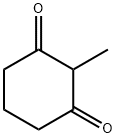
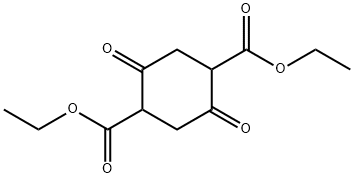
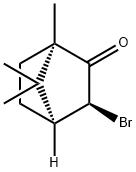

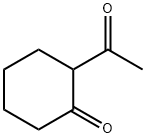
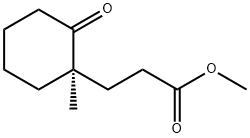
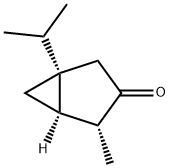
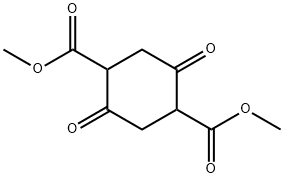
You may like
-
 2-Methylcyclohexanone CAS 583-60-8View Details
2-Methylcyclohexanone CAS 583-60-8View Details
583-60-8 -
 2-Methylcyclohexanone CAS 583-60-8View Details
2-Methylcyclohexanone CAS 583-60-8View Details
583-60-8 -
 1975-50-4 98%View Details
1975-50-4 98%View Details
1975-50-4 -
 2-HYDROXY BENZYL ALCOHOL 98%View Details
2-HYDROXY BENZYL ALCOHOL 98%View Details
90-01-7 -
 2-Chloro-1,3-Bis(Dimethylamino)Trimethinium Hexafluorophosphate 221615-75-4 98%View Details
2-Chloro-1,3-Bis(Dimethylamino)Trimethinium Hexafluorophosphate 221615-75-4 98%View Details
221615-75-4 -
 14714-50-2 (2-Hydroxyphenyl)acetonitrile 98+View Details
14714-50-2 (2-Hydroxyphenyl)acetonitrile 98+View Details
14714-50-2 -
 118753-70-1 98+View Details
118753-70-1 98+View Details
118753-70-1 -
 733039-20-8 5-broMo-2-chloro-N-cyclopentylpyriMidin-4-aMine 98+View Details
733039-20-8 5-broMo-2-chloro-N-cyclopentylpyriMidin-4-aMine 98+View Details
733039-20-8